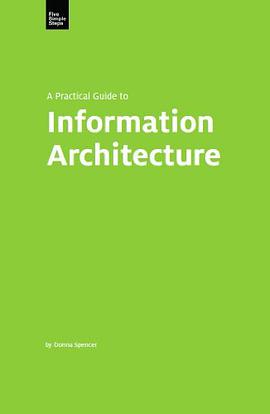A Practical Guide to Information Architecture 豆瓣
作者:
Donna Spencer
Five Simple Steps LLP
2010
- 6
If you're a website designer, intranet manager or someone without much Information Architecture experience, this book answers all those questions you were afraid to ask.
Drawing on her many years experience of practising and teaching Information Architecture, Donna Spencer guides you through some simple steps to better IA and leaves you feeling empowered and able to run your own IA projects. Whether it's organising content, providing clear descriptions or ways for people to get to them, this book is armed with practical advice and examples.
---
Who should read this book?
If you need to know how to structure content on a website, then you need to know some basics of how to design an IA. So, that includes people like Project Managers, Copywriters, Developers, Designers, eMarketing people, Product Owners, Web App owners and editorial assistants.
LOOK INSIDE
Each Five Simple Steps book is individually, and beautifully, designed around the content. A Practical Guide to Information Architecture is no different. Spanning over 300 pages, the book features supporting case studies, illustrations and examples.
---
Official Site: http://www.fivesimplesteps.com/products/a-practical-guide-to-information-architecture
Drawing on her many years experience of practising and teaching Information Architecture, Donna Spencer guides you through some simple steps to better IA and leaves you feeling empowered and able to run your own IA projects. Whether it's organising content, providing clear descriptions or ways for people to get to them, this book is armed with practical advice and examples.
---
Who should read this book?
If you need to know how to structure content on a website, then you need to know some basics of how to design an IA. So, that includes people like Project Managers, Copywriters, Developers, Designers, eMarketing people, Product Owners, Web App owners and editorial assistants.
LOOK INSIDE
Each Five Simple Steps book is individually, and beautifully, designed around the content. A Practical Guide to Information Architecture is no different. Spanning over 300 pages, the book features supporting case studies, illustrations and examples.
---
Official Site: http://www.fivesimplesteps.com/products/a-practical-guide-to-information-architecture

